|
|
28 Days Madhya Pradesh (Central India) & Gujarat (Western India)
Tour
(28 Days /
27 Nights)
(Delhi -
Jaipur - Agra - Gwalior - Orchha - Khajuraho - Bandhavgarh - Bhopal -
Sanchi - Mandu - Indore - Vadodara - Ahmedabad - Bhavnagar - Sasan Gir
National Park - Diu - Mumbai)
(to view the route of this tour on a Map please click
here)
|
|
The State
of Madhya Pradesh (Central India) is geographically the heart of
India. The largest part of the state is a high plateau, which is very
dry and hot in summer. The size and the geographic isolation of Madhya
Pradesh is known in history under the name of Malwa, this state of
invasions were largely unaffected. Nevertheless,
Gujarat (Western India) has a long and eventful history and has a
number of attractions.
But Gujarat has always been a center of the Jains. Some Jain temples,
like those of Palitana are the major attractions of this state. Since
the Jains are among the most influential groups in India, Gujarat is
also among the wealthy countries of the Subcontinents. This position
is strengthened by a flourishing textile industry.
Other highlights of this long and intensive 28-day trip to India are
Delhi, Jaipur, Agra and Mumbai (Bombay). |
|
|
|
Day
01. Flight to India (Delhi)
Around midnight arrival in Delhi.
The cosmopolitan City and capital Delhi is the main gateway for
travellers. You are met by an Indo Vacations representative and
transferred to your Hotel.
Day 02. Delhi
In the morning we have sightseeing in Old Delhi. We take a Rickshaw
Ride parallel to the Red Fort
through the old city and famous Silk Road and Silver Bazaar.
Sightseeing of Old Delhi includes "Rajghat", the site where
Mahatma Gandhi was cremated and
Jama Masjid, the
great mosque of old Delhi. Today we also visit the famous
"Humayun Tomb" which
is the first substantial example of Mughal
architecture
in India
and "Qutub Minar". "Qutub
Minar" is 71 meter high and consists of five stories. In 1199 work
began on this tower which was intended to be the most glorious tower
of victory in the world. This tower was damaged twice and repaired in
1326 and 1368. Before we proceed to the Hotel we drive through the
embassy area in New Delhi where we visit the
India Gate and see some
impressive Government Buildings. |
|
|
|
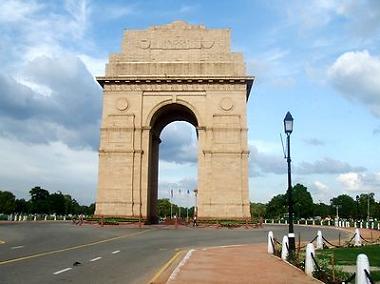 |
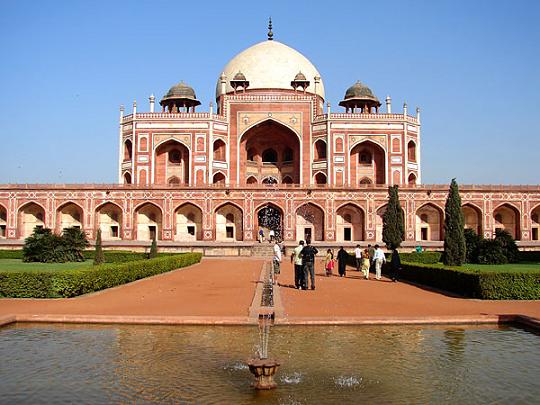 |
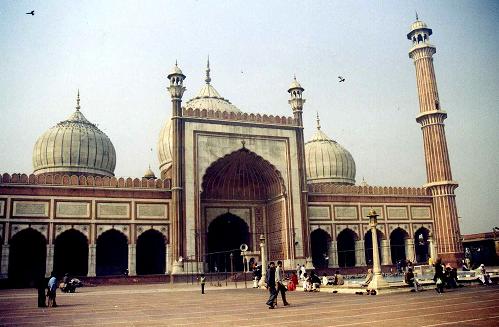 |
|
India Gate |
Humayun Tomb |
Jama Masjid
Delhi |
|
|
Day 03. Delhi
- Jaipur (about 270 km / 6-7 hrs)
Today we drive to the Pink City,
Jaipur. This
city owes its name, foundations and careful planning to the great
warrior and astronomer, Maharaja Sawai Jai Singh II. Jaipur is the
capital of Rajasthan and famous for its handicrafts and precious and
semiprecious stones.
After a short break we visit the Monkey Temple of Jaipur (Galta ji)
which is about 2.5 km from the old city of Jaipur. Galta ji is a
temple of the Sun God. It is a very idyllic place, many tourists do
not even come here. At the entrance gate of the temple you can buy
food for the monkeys.This temple is called Monkey Temple of Jaipur due
to various monkeys in the temple that are a reincarnation of the god
Hanumana. In the evening we drive through the new city of Jaipur and
visit
"Laxmi Narayan Mandir",
a Hindu temple made out of white marble. We might have an opportunity
here to observe a prayer ceremony.
Day 04.
Jaipur : Sightseeing
After breakfast we drive to the ancient capital of
Amber,
laying 11 km. away from Jaipur. Amber was the ancient capital of
Kachhawaha dynasty for 6 centuries before it was moved to newly
created Jaipur. We will ascend to the Palace Fortress on the back of
an Elephant. Enroute to Amber we will visit the
Hawa Mahal
(Palace of the Winds), built in 1799 AD, it contains 953 small
casements with each having its own balcony. The windows enabled cool
air to circulate and the ladies to watch processions below without
being seen. In the afternoon we visit the City Palace that is still
the formal residence of the royal family, built in a blend of the
Rajasthani and Mughal architecture. In the museum of the
City Palace
we visit the private collection of the Jaipur Maharajas. We continue
to Jantar
Mantar, a stone observatory, and the largest of Jai
Singh's five remarkable observatories. Its complex instruments reveal
us the secrets of medieval Indian astronomy. Later we have a walk
through the colourful Bazaar of Jaipur and visit a factory to see the
famous block printing work being done since centuries in Jaipur.
Day 05. Jaipur - Fatehpur Sikri - Agra (about 260 km / 5-6 hrs)
Today we leave Rajasthan, the biggest state in India and drive through
a series of fields, small towns and villages to Agra. Enroute we make
a stop and visit Fatehpur Sikri,
which was once an imperial capital frozen in time, constructed by
Akbar the Great in the 16th century. This wonderful city constructed
by red sand stones was abandoned as abruptly as it had been built. It
has been generally stated that it was due to failing in the water
supply. Late evening arrival in Agra.
Rest of the day at leisure.
|
|
|
|
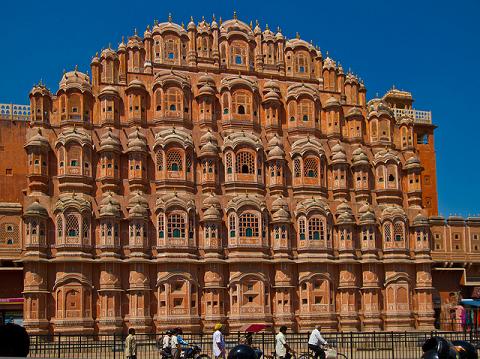 |
 |
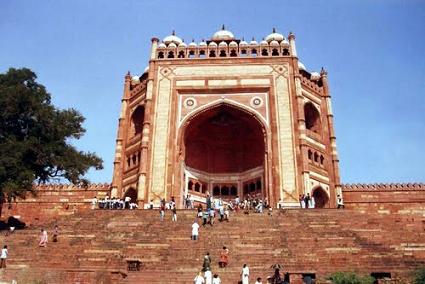 |
|
Hawamahal |
Citypalace
Jaipur |
Buland Darwaza |
|
|
Day 06. Agra
Today very early in the morning after taking a cup of coffee in the
hotel, we left the hotel and proceed to Taj mahal. We have sunrise
visit of the most beautiful and famous building of India, the
Taj Mahal, an enduring
monument of love, with a continually fulfilling beauty. It was built
by the Mughal Emperor Shah Jahan between 1631-52, as a tomb and
memorial to his beloved wife Mumtaz Mahal (Jewel of the Palace), who
died at the age of 39 giving birth to her 14th child. We spend enough
time at Taj Mahal to take this impressive memory home. Then drive back
to the hotel and take breakfast. After a short break in the afternoon
we visit
Agra Fort, built by three
of the greatest Mughal emperors. The construction of this massive
structure began in 1565 under Akbar's reign and continued till the
time of his grandson's reign, Shah Jahan who built the impressive
imperial quarters and mosque. Then we drive to Itmad-ud-Daulah which
was built by Nur Jahan for his father Ghias-ud-Din Beg.
Itmad-ud-Daulah was built between 1622 and 1628 A.D. on the banks of
Yamuna River. The tomb is not as big as Taj Mahal but the inlay
designs and carvings are not less than Taj Mahal. After this there is
the opportunity to look at the famous fine marble inlay work which is
still being done in Agra by the descendants of the families of
builders and artists of the Taj Mahal. |
|
|
|
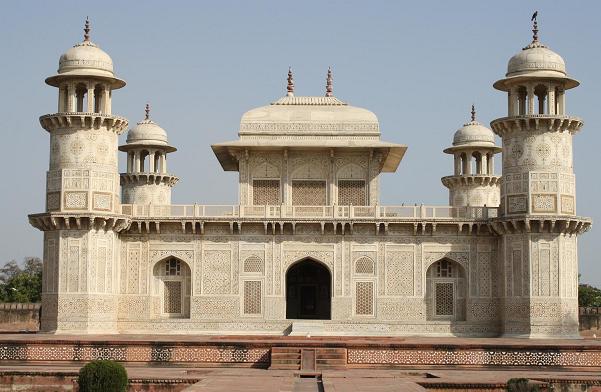 |
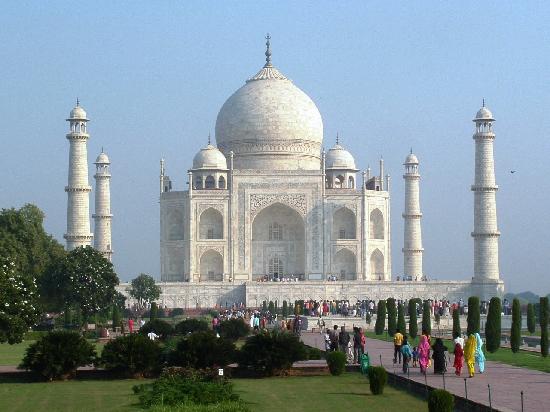 |
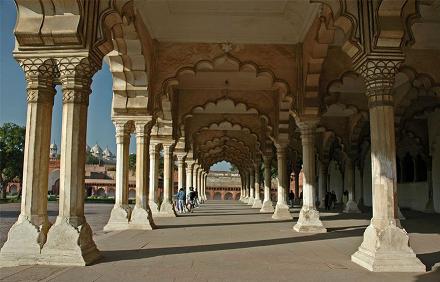 |
|
Agra Itmad Ud
Daulah Tomb |
Agra Taj Mahal |
Agra Diwan I Am |
|
|
Day 07. Agra - Gwalior - Datia - Orchha (about 235 km / 5.5 hrs)
After the breakfast we drive to Orchha.
En route we will visit the Gwalior.
Gwalior's strategic position between North and South India has made
it's Fort an important possession and it was captured by several
ruling houses. Some left almost as soon as they came, while others
stayed on to build and beautify the citadel. We will visit the fort of
Gwalior. Then visit a temple from the 9th century, dedicated to the
god Vishnu. Before proceeding to Orchha, we visit the first Palace of
the Bundela dynasty in Datia. Datia is an ancient city, which is
mentioned in the Mahabharat as "Daityavakra". It is a place of
pilgrimage for the followers of Shri Devi Siddhapeeth Peetambra. After
sightseeing we drive to Orchha through colorful villages and fertile
land. Orchha's grandeur has been captured in stone, frozen in time, a
rich legacy to the ages. In this medieval city, the hand of time has
rested lightly and the palaces and temples built by its Bundela rulers
in the 16th and 17th centuries retain much of their pristine
perfection. Arrival in Orchha in the evening.
Day 08. Orchha (visit) - Khajuraho (about 180 kms / 4 hrs)
In the morning we visit the temples and palaces in Orchha. We visit
the Jehangir Mahal Palace, Raj Mahal whose wall paintings have depict
beautiful natural scenes and motifs. Then we visit the Ram Raja Temple
which is the main temple of Orchha. It dates from the 16th century and
is visited by thousands of visitors regularly. In the temple there is
a statue of the god Rama which once brought from the wife of the ruler
of Bundela of the pilgrimage from Ayodhya. After visiting the palace
of Orchha, we drive to Khajuraho.
Khajuraho was the capital of the Chandela dynasty. The Chandela Kings
claimed descent from the moon. The temples of Khajuraho are among the
finest examples of temple craftsmanship in the whole of India. Arrival
in Khajuraho in the evening. The rest of the day at leisure.
Day 09. Khajuraho: Sightseeing & Recreation
Today we visit the temple complex of
Eastern Group
and Western Group
to see the most beautiful temples in India. The temples of Khajuraho
are considered the epitome of Hindu architecture and sculpture art.
Most famous among them is the Laxmana Temple which is dedicated to god
Vishnu. The presence of erotic sculptures in the Temples at Khajuraho
is one of the expressions among others of the celebration of all human
activities displaying different aspects of Hinduism. The figures of Apsaras, the sky dancers, can be seen at each temple. The rest of the
day is at leisure to relax. |
|
|
|
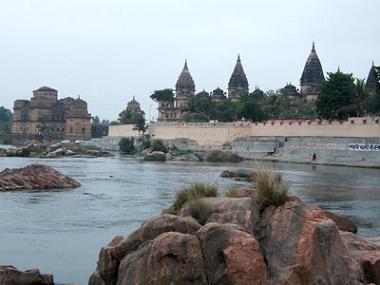 |
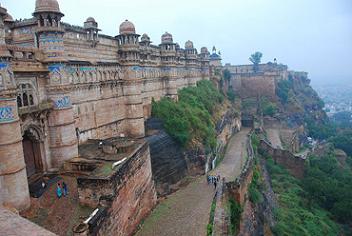 |
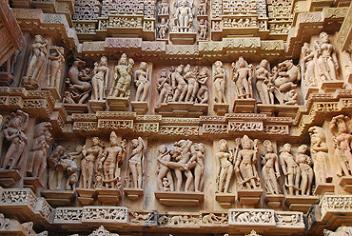 |
|
Orchha |
Fort Gwalior |
Khajuraho
Temple |
|
|
Day 10. Khajuraho - Bandhavgarh (about 270 kms / 8 hrs)
Today in the morning after having breakfast we drive to
Bandhavgarh National Park. Bandhavgarh National Park is situated amidst the
Vindhyas mountain range in Madhya Pradesh. The famous white tigers
were first found in the Bandhavgarh National Park. The other wildlife
attractions in the park besides Tiger includes Regal Gaur, the
Muntajac, Jungle Cat, Ratel, Porcupine, Rhesus Macaque, black faced
Langur, Nilgai, Chital, Chinkara, Sloth Bear, Four-horned Antelope,
Deer, Striped Hyena, Fox, Jackal, Leopard, Mongoose and Wild Boar. The
deep valleys of hilly Vindhyan mountains are covered with teak and
bamboo forests, open grasslands and Sal-bamboo and mixed forests offer
excellent opportunities for wildlife and bird watching. The name
Bandavgarh comes from the highest mountain of the area (807 m).
Day 11. Bandhavgarh National Park
Today we have two jungle safaris in Bandhavgarh National Park. We
watch the activities of various animals like black faced Langur,
Nilgai, Chital, Chinkara, Sloth Bear, Four-horned Antelope, Deer,
Striped Hyena and Tigers. The park is located in the districts of
Shahdol and Jabalpur in the state of Madhya Pradesh. The park was
founded in 1968 and covers an area of 437 square kilometers, which is
mostly covered with deciduous forest, vast grasslands and bamboo
woods.
Day 12. Bandhavgarh National Park - Jabalpur (about 90 kms / 2 ˝
hrs) - Bhopal (by train / 5 hrs)
After breakfast you will be transferred to
Jabalpur Railway Station for Train to Bhopal.
Bhopal is the capital of Madhya Pradesh
which was founded by Raja Bhoj in 11th century. Bhopal is known as the
city of lakes. Late evening arrival in Bhopal. Rest of the time free
for leisure at the hotel.
|
|
|
|
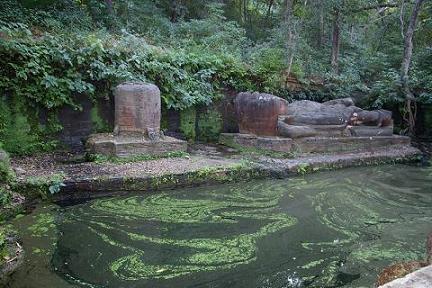 |
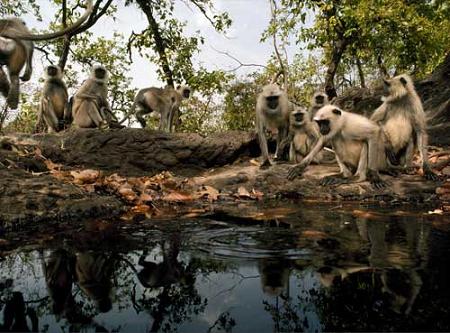 |
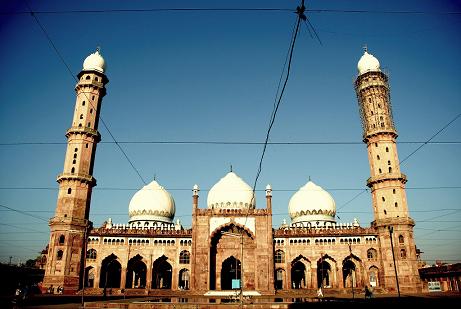 |
|
Bandhavgarh
Nationalpark |
Bandhavgarh
Nationalpark |
Bhopal:
Tajuldin Moschee |
|
|
Day 13. Bhopal: Excursion Udaigir and Sanchi
Today we have excursion to Sanchi
(UNESCO Heritage Site) and Udaigiri. Stupa of Sanchi is one of the
oldest stone structure. The construction work of this stupa was look
after by Ashoka's wife, Devi herself, who was the daughter of a
merchant of Vidisha. Sanchi was also her birthplace and also the venue
of her and Ashoka's wedding.The Udayagiri Caves are a Hindu tradition
site which are situated near Vidisha in
Madhya Pradesh. They were
decorated properly and reworked under the command of Chandragupta II,
Emperor of the Gupta Empire, in the late 4th and 5th century CE.
Udayagiri Caves are most important archaeological sites from the Gupta
period and are presently a tourist site under the protection of the
Archaeological Survey of India.
Day 14. Bhopal - Mandu (about 280 km / 7 hrs)
Today after having breakfast we drive to royal city of Mandu.
Mandu was founded by Raja Bhoj in the 10th
century as a fortress and retreat. Mandu is the largest standing
fortified town in the world. Mandu is also known for a very romantic
love story between its last King Baz Bahadur and his love Rani Rupmati
– a lovely Rajput peasant girl. It is among the most interesting
sights in central India.
Day 15. Mandu - Maheshwar - Omkareshwar - Mandu (about 210 kms)
Today we have a full day excursion to Maheshwar and Omkareshwar. First
we drive to Maheshwar: Here is the Chhatri of Ahalya Bai who died in
1795, she is the widow of Malhar Rao, after the death of her husband
she took over the government and fulfilled their task with great care
and abilities. After visiting Maheshwar we drive to Omkareshwar.
Omkareshwar is a Hindu temple which is devoted to God Shiva. It is
situated on an island called Mandhata or Shivapuri in the Narmada
river; the shape of the island is like Hindu symbol. Omkareshwar is
formed by the sacred river Narmada. After visiting the temples we
proceed to Mandu where we have overnight stay.
|
|
|
|
 |
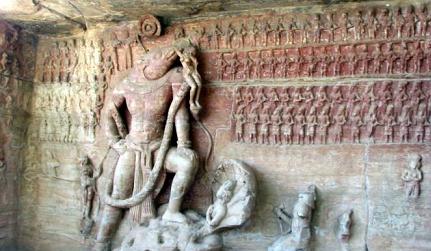 |
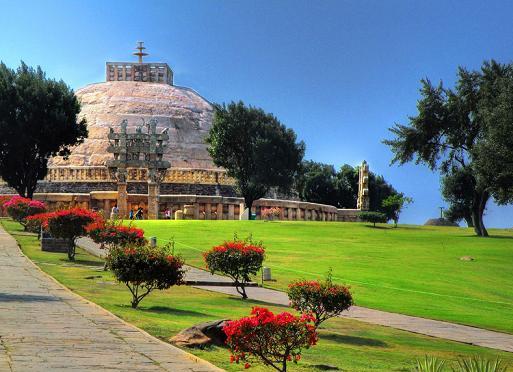 |
|
Udaigiri Madhya
Pradesh |
Udaigiri Madhya
Pradesh |
Sanchi Stupas |
|
|
Day 16. Mandu - Indore (about 100 kms / 2.5 hrs)
Today morning we have sightseeing in Mandu, we visit Hindola Mahal,
Jami Masjid, Rewa Kund (Palace of Baz Bahadur), Roopmati's Pavilion,
Hoshang Shah's Tomb, Hindola Mahal and the Darwazas/Gates of Mandu.
After the sightseeing of Mandu we drive to
Indore. Indore was the historical capital of Holkars and is a
center of the textile processing industry. Arrival in Indore in the
late afternoon. In the evening we have sightseeing in Indore.
Sightseeing include places like Lalbagh Palace and Museum, the Chattri
Bagh, the Bada Ganesh and Annapurna Temple. |
|
|
|
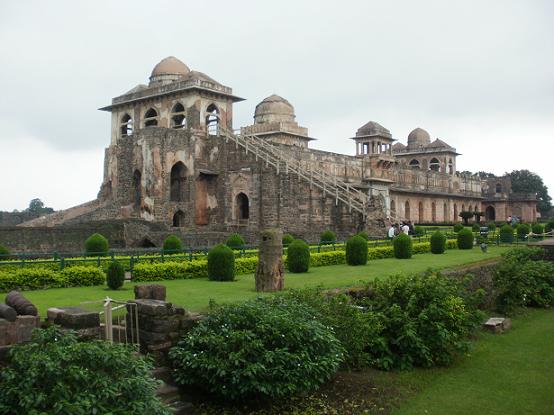 |
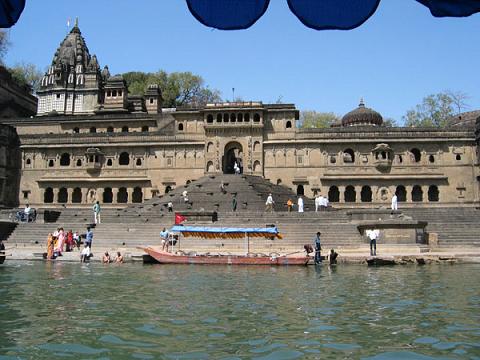 |
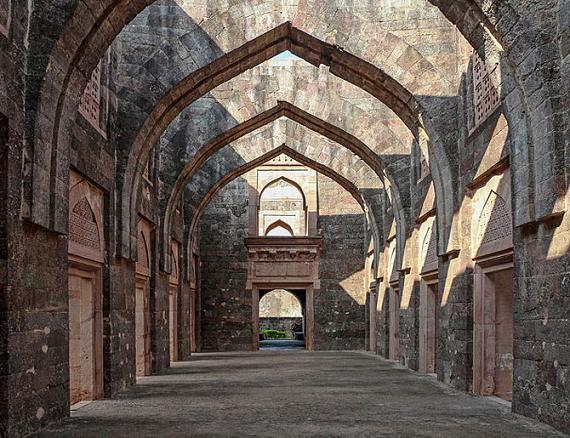 |
|
Mandu:
Jahaj Mahal |
Indore
Maheshwar |
Mandu |
|
|
Day 17. Indore - Champaner - Vadodara (about 370 kms / 7 hrs)
Today morning we drive to Vadodara towards Gujarat State, on the way
to Vadodara we visit Champaner (UNESCO Heritage Site). We visit the
site of Champaner Fort. The Champaner Fort was the royal seat of
Muhammad Begara. Champaner Fort is enclosed by massive walls with huge
bastions, gates and carved balconies. On the north west is the huge
lake - Vada Talav and ruins of the palace of the Sultan. Then we drive
to Vadodara. Vadodara is the former capital of the erstwhile Baroda
State ruled by the Maratha Maharaja Gaekwad. This city is a beautiful
city of sprawling parks, lakes, palaces, museums and is also a major
university town. In Buddhist texts, Vadodara has been described as a
town “in the heart of the Banyan Trees”.
Day 18. Vadodara
Vadodara is today the major university -and- industrial city and the
third largest city of Gujarat State. Today we visit the old town, the
Laxmi Vilas Palace in Indo Saracenic style and Fatehsingh Museum. Our
local guide takes you to the bazaars and markets of Vadodara.
Day 19. Vadodara - Ahemdabad - Gandinagar - Ahemdabad (about 170
kms)
Today we drive to Ahmedabad.
Ahmedabad is the second largest city and cosmopolitan capital
city of
Gujarat. This city
nurtures in its fold pages of history, a breath of harmony and a
show-case of exquisite architecture. Ahmedabad is called Manchester of
the East due to textile industry which is located here. Upon arrival,
you will be transferred to the hotel in Ahmedabad. In the afternoon we
go for the sightseeing in Ahmedabad. We visit the
Gandhi ashram.
Gandhi ashram is situated in Sabarmati which is about 6 kms from the
Ahmedabad. This ashram is one of the beautiful ashram and the
important tourist attraction in Ahmedabad. This ashram was the Mahatma
Gandhi's headquarters during their struggle for India's independence
and now houses some of the records of the major events in his life, a
memorial centre and a library. After visiting the Gandhi Ashram we
visit the city of Gandhinagar and the famous temple "Akshardham". The
Akshardham temple is the most famous temple of Swaminarayan sect, one
of the richest religious sects in the world. This temple houses a
large statue of God Swaminarayan and is a unique cultural complex.
Akshardham is a large monument, where 6000 tons of pink sand stones
were installed and this resort is surrounded by lush green gardens and
beautiful fountains.
Day 20. Ahemdabad: Excursion
Today we have sightseeing of Ahmedabad. We we visit the
Hathee Singh Jain Temple. This temple is dedicated to Dharamanath,
the 15th Jina or Jain apposite. This temple is one of the best ornated
Jain temples in Ahmedabad and is built of pure white marble and
decorated with rich carvings. Later we visit the
Jama Masjid.
Jama Masjid was built in 1423 by Ahmad Shah and described by some as
the most beautiful mosque in India. This mosque is believed to have
been constructed from the items salvaged from the demolished Hindu and
Jain temples. After visiting the mosque we visit the
Calico museum of textiles. This museum is widely regarded as one of
the finest textiles museums in the world, started in Calico Textile
Mill. This museum of textiles has excellent exhibits of antique and
modern textiles including rare tapestries, wall hangings, costumes and
old weaving machines. After sightseeing we drive to hotel. Rest of the
time free for leisure at the hotel.
|
|
|
|
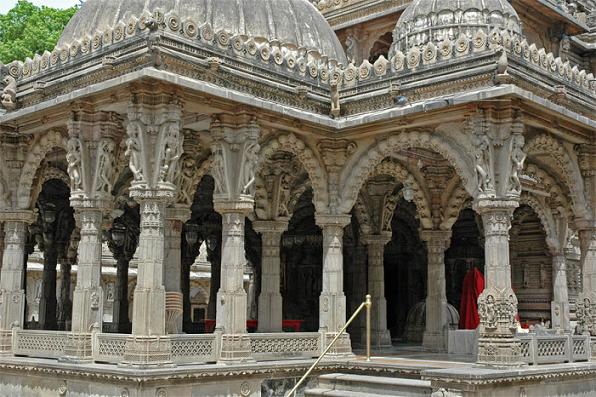 |
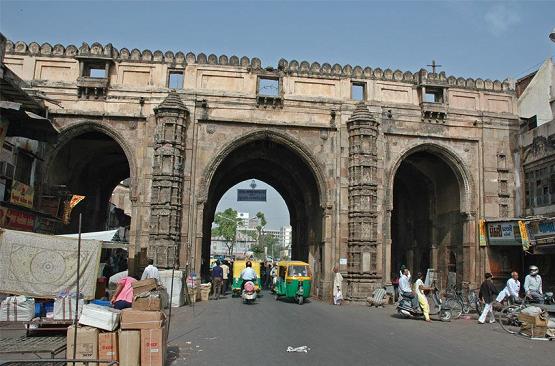 |
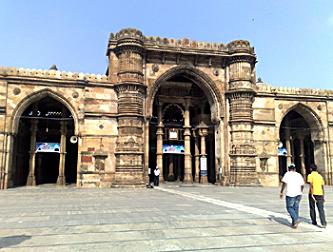 |
|
Ahmedabad
Hathisingh Temple |
Ahmedabad Teen
Darwaza |
Ahmedabad Jami
Masjid |
|
|
Day 21. Ahmedabad
- Adelaj
- Bhavnagar (about 230 km / 4˝ hrs)
Gujarat has a special kind of architecture - the stepwell. One of the
most beautiful stepwell is situated in the Adelaj Village. We visit
the Adelaj Village. Then we walk through the bazaars and admire the
colorful spice mountains and everything you need for everyday life.
Then we visit the Siddhi-Sayid Mosque. In the afternoon we drive to
Bhavnagar,
where we have
overnight stay.
Day 22. Bhavnagar - Palitana - Sasan Gir National Park (about 280 km /
6 hrs)
Today in the morning we drive to Sasan Gir National Park. En route we
visit palitana. Palitana is
the gateway to the Shatrunjaya hill and one of the Jainism's holiest
pilgrimage sites. There are about 863 temples on the top of the hill,
exquisitely carved in marble and built over a span of 900 years. To
visit the temples on the Shatrunjaya hill one has to climb 600 m up
the hill. So today we will ascend the
Shatrunjaya hill
either on foot or in Doli or lift chairs. After reaching the top of
the hill we will visit the Jain temple. The temple which is dedicated
to Shri Adishwara, the first Jain Tirthankara (apostle) is one of the
most magnificent temples and the most sacred temple on Shatrunjaya
hill. The Muslim shrine of Angar Pir is also situated near the temple.
After visiting the temple we will visit the Chaumukha or the four
faced temple. It has an image of Adinath facing out in the four
cardinal directions. After the sightseeing of Palitana we drive to
Sasan-Gir National Park.
Day 23. Sasann Gir National Park (Camp)
In the morning and afternoon enjoy the jeep safari in
Gir National Park.
Changeable hawk eagle, crested serpent eagle, Bonneli’s eagle, shaheen
peregrene falcon, laggar falcon, shikra, painted sandgrouse, quails,
black-hooded and golden oriels, marshall’s and common iora, Asian
paradise flycatcher, tickell’s blue, red-throated, verditer and Asian
brown flycatchers, yellow-crowned, brown-capped pygmy, black-rumped
flameback woodpeckers, green and blue-cheeked bee-eaters, coppersmith
barbet, common, lesser pied and white-throated kingfisher,
blossom-headed parakeet, hoopoe, black, ashy and white-bellied drongos,
rufous treepie, large cuckoo shrike are some of the birds that could
also be seen here. In the evening we have a nature walk with a birding
guide to a riverside spot near Gir Birding Lodge. A good number of
birds especially quails and passerines, can be seen in the bushes
along the trail.
|
|
|
|
|
|
Day 24. Sasan Gir Nationalpark - Somnath (about 60 km) - Diu (about
90 km / 2 hrs)
In the morning we drive further to visit the legendary shore temple of
Somnath. This temple is one of
the twelve most sacred shrines dedicated to the Lord Shiva and a
jyotirlinga. According to the legend, Somnath temple was built
originally in gold by Somraj, the moon god. This Somnath temple was
rebuilt and destroyed seven times till 1706 when it was raided by the
Mughal emperor Aurangzeb. After that it was finally rebuilt in 1950
with the support of Sardar Vallabhabhai Patel. The current temple was
built to traditional designs on the original site by the sea. After
visiting the Somnath temple we drive to
Diu. Diu is a tiny island in the Arabian Sea which is situated
near the port of Veraval in Gujarat and is separated from the southern
extremity of the Saurashtra peninsula by a narrow channel running
through the swamp. Diu is a sensuous blend of sun, sand and deep blue
sea.
Day 25. Diu
Today we start with our sightseeing in Diu and visit the
Diu Fort. Diu Fort is an
expansive and imposing structure, situated on the coast of the island.
It was constructed between 1535 and 1541 AD and offers a magnificent
view of the sea. After visiting the fort we visit the St. Paul's
Church. St. Paul's
Church is dedicated to our Lady of Immaculate Conception. This
church was built during the 17th century and adorned with curiously
treated volutes and shell-like motifs. Later we visit the Diu museum.
Diu museum houses
wooden carvings, statues, idols, shadow clocks and other important
artifacts collected from various sites. In the evening we visit the
Nagoa beach. This
beach stretches about 2 km from one end to the other and is very
beautiful and quiet and is in the shape of a horse shoe.
Day 26. Diu - Mumbai (by air)
Today we have flight from Diu to Mumbai.
Arrival in Mumbai and transfer to the hotel. Mumbai is the capital of
Maharashtra. Mumbai is the largest film industry and largest textiles
market in the world. Mumbai is a cluster of seven islands. It derives
its name from Mumbadevi, the patron goddess of the Koli fisher folk,
its oldest inhabitants. Mumbai city is full of contrasts. Mumbai with
its temples, cathedrals and mosques is a real cosmopolitan city of
India. Rest of the day free for leisure at the hotel.
|
|
|
|
|
|
Day 27. Mumbai: Excursion
After having our breakfast we have sightseeing in Mumbai. Today in our
sightseeing we visit the Gandhi Museum, Hanging Garden, City Museum,
Marine Drive Flyover, St. Thomas Cathedral, Chhatrapati Shivaji
terminus, Rajabai Tower, Kamala Nehru Park, Hanging Gardens, Mumbai
University, High Court, Oval Maidan and Gateway of India. We have a
walk through the harbor area and visit the Gateway of India built in
1927 to commemorate the visit of George 5th from England. We have a
Boat Ride at Gateway of India. In the afternoon we visit the laundry
people on the shore (Dhobi Ghat) and later we will also learn about
the art of Dabbawalas. A dabbawala is a person who is part of a
delivery system that collects hot food in lunch boxes from the
residences of workers in the late morning, delivers the lunches to the
workplace by various modes of transport, mostly bicycles and the
railway trains, and returns the empty boxes back to the customer's
residence that afternoon. They are also made use of by prominent meal
suppliers in Mumbai where they ferry ready, cooked meals from central
kitchens to the customers and back.
Day 28. Flight to Home Destination
The day is today at leisure. You have to checkout from the hotel up to
12.00 am. Depending on your departure time you will be transferred to
airport / Railway station of / Bus station for onwards journey.
(End of
Tour) |
|
|
|
Tour
Reservation
To get more
information or to book this tour please submit the
Query Form
or send us an
e-mail ! Your
booking will be activated only after we get a reconfirmation from
your side.
About Hotels:
We provide you the accommodation as per your budget mentioned above
in the table of hotels category for any of the booked tour. Hotels
provided by us are from budget to luxury class hotels. The criteria
for selecting hotels by us remains the best value of your money. We
also provide you wherever possible accommodation in heritage hotels.
Heritage Hotels are old Palaces, Forts and Grand mansions of
Maharajas which have been later renovated and converted into Hotels.
Rooms are decorated all individually. Rooms are comfortable,
romantic and present the flair of olden Maharaja days.
|
|

